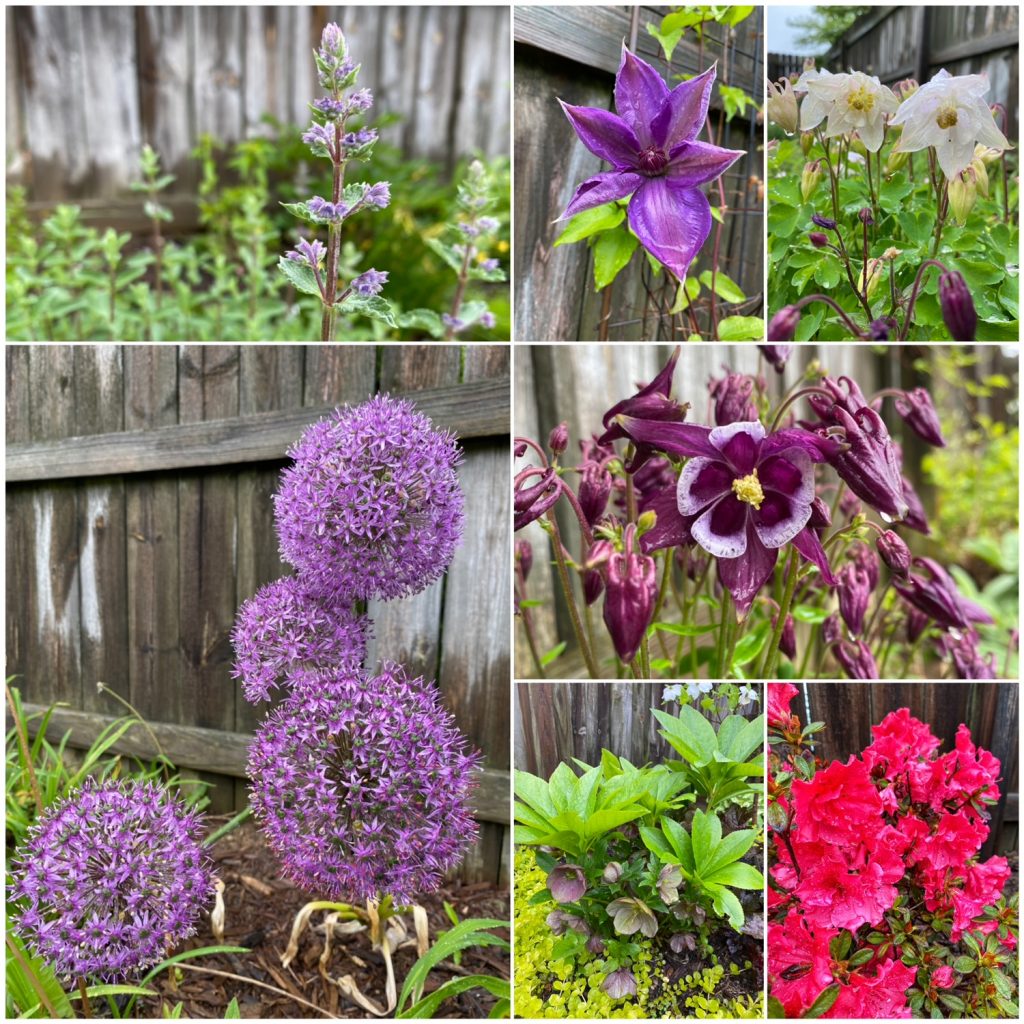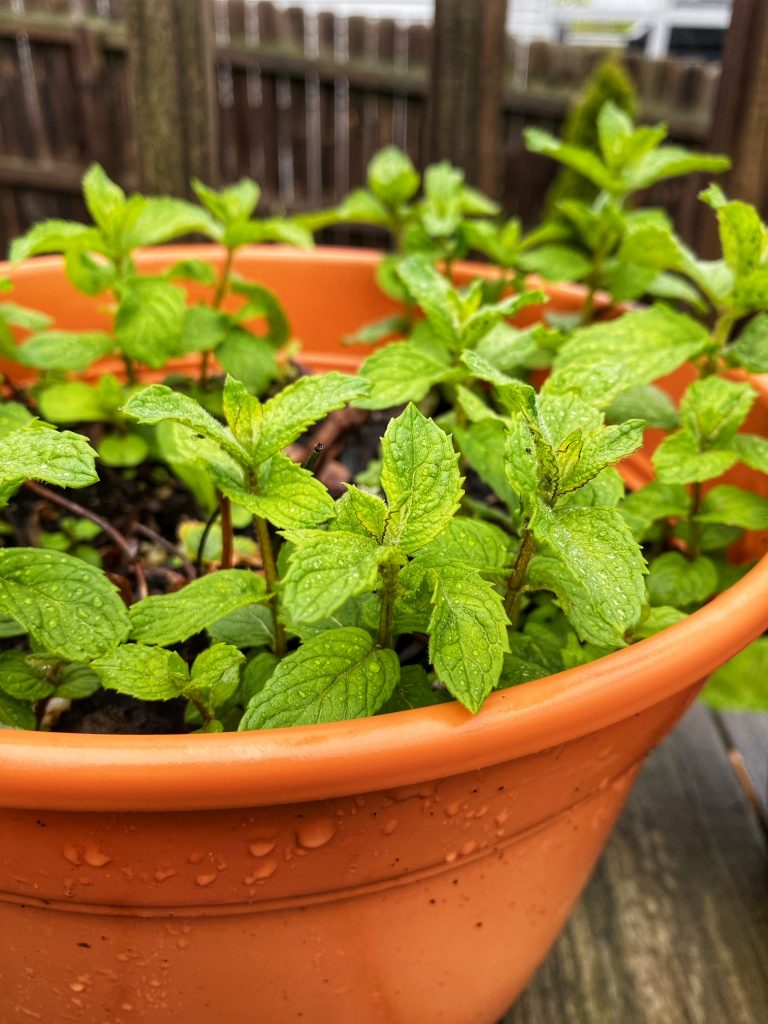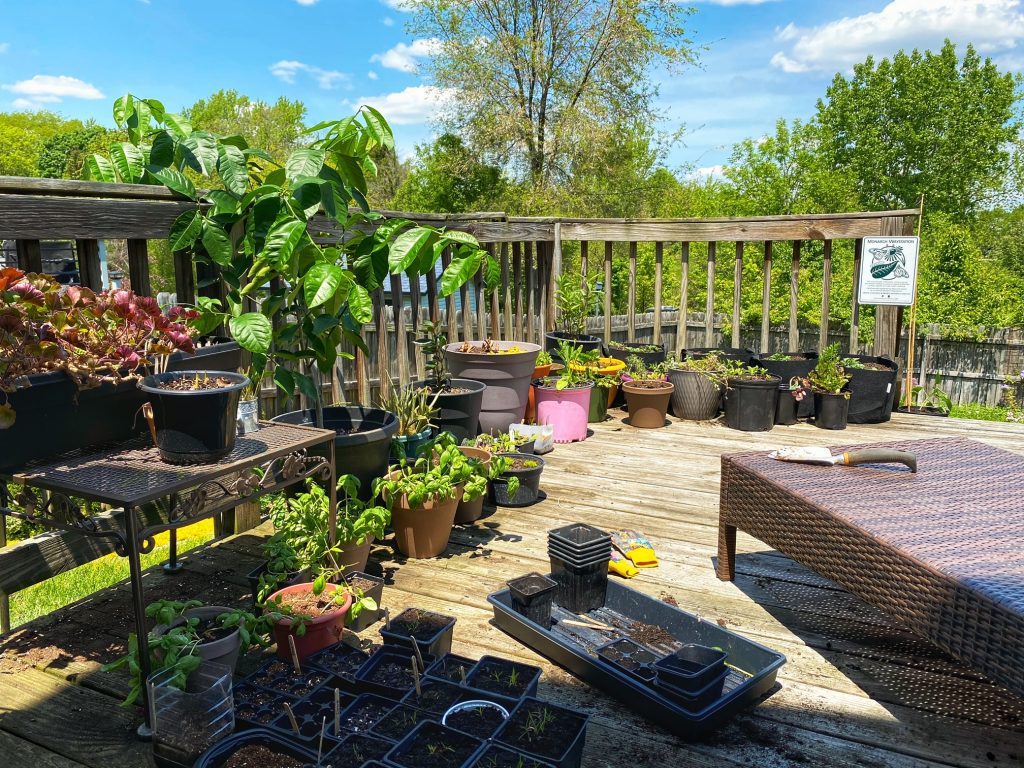
Too many plants?! Where???
The past few days have been a flurry of planting. And sweating. And complaining about sweating. And happily prancing around the garden, hoping the neighbors aren’t watching. On Friday, the last of the nights in the 40s were behind us, so I started going wild and popping things in the ground. In went the marigolds, zinnias, bachelor button flowers, german chamomile, thyme, parsley, basil, oregano, and the borage plants that were living in the cold frame. I ran out of room in the yard, so I started potting things up into larger recycled containers on the deck.
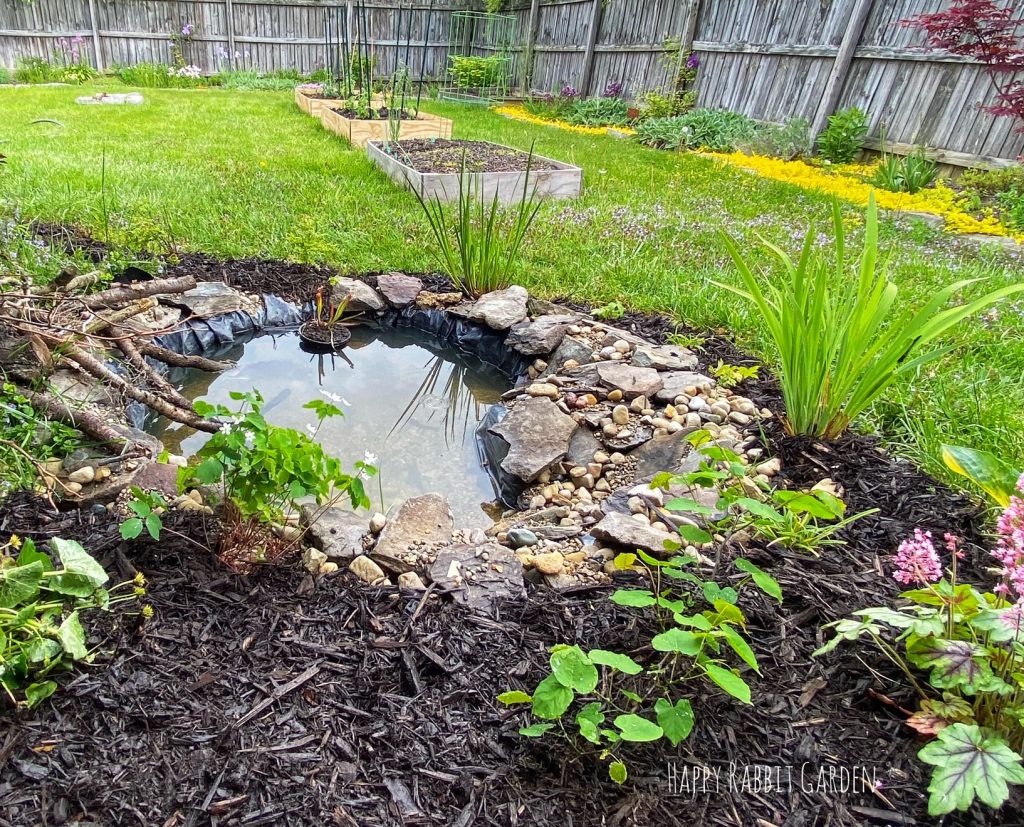
A little bit of mulch really helped snazzy up the new water feature.
The weekend saw several trips to the garden center to acquire more dirt and pots. And mulch. I did a little more grass-removal around the wildlife pond, and started mulching in the area. The birds don’t seem to have found the new watering hole yet, but there’s some new insect larvae in the water, and a few spiders and other bugs hanging out around the rocks. The new plants are all looking happy, including the pitcher plant I added last week. Pitcher plants are carnivorous, and love to feast on mosquitoes, which they should have plenty available to enjoy. I potted the plant up in and actually set it into the water, so the leaves are dry, but the roots of the plant are under the surface. It should really thrive and I’m excited for some more pesticide-free mosquito control!
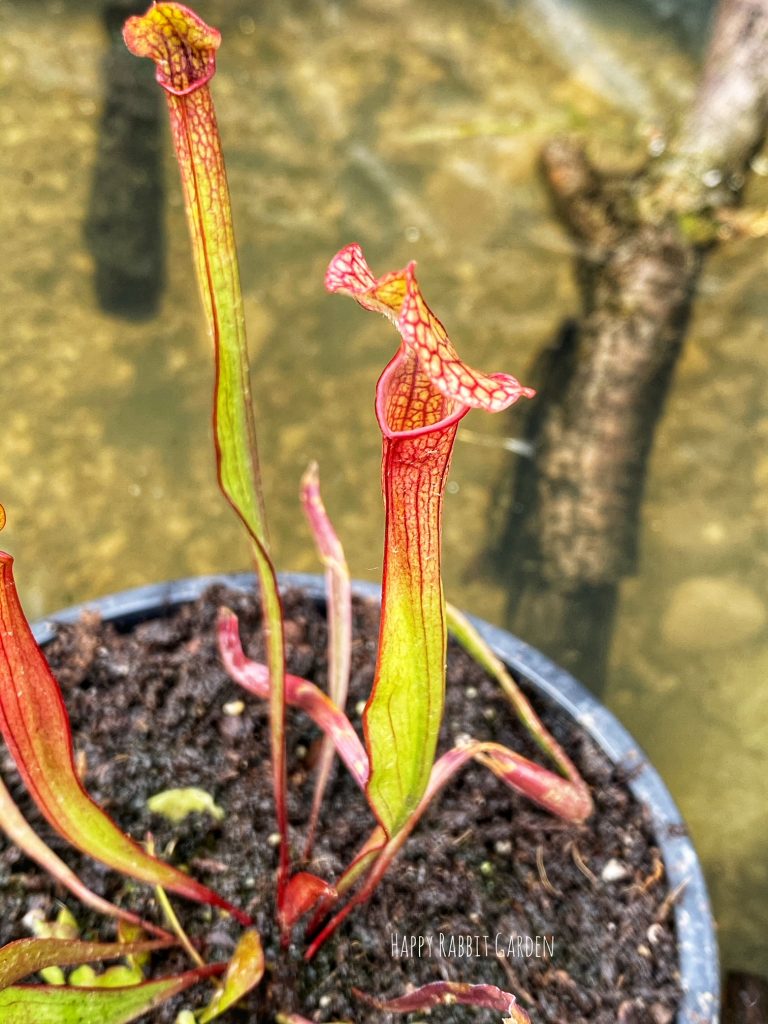
The new Pitcher Plant, ready for breakfast.
Moving along down the yard, the raised beds are now all planted up (finally!). The first bed houses some carrots, parsley, lettuce, leeks, shallots, garlic, and pole beans. I’m going to add some parsnips in a few weeks once I do some harvesting to make room for them.
The next beds are stuffed full of tomatoes. I ended up with 14 plants: 8 san marzano paste tomatoes, and 6 druzba tomatoes. I am elated to finally have them all in the ground. I’ll be less excited once I have buckets of tomatoes to peel and dice for canning season, but that’s really the whole point of this exercise.
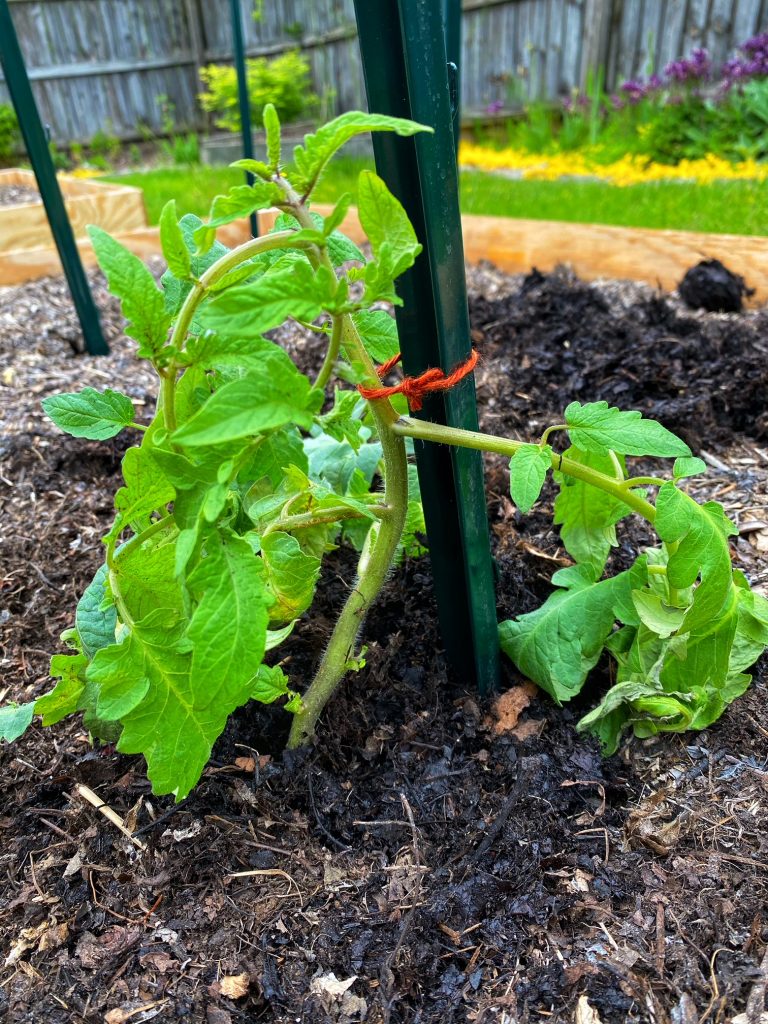
The tomatoes are in the ground!
Growing tomatoes is sort of a national past time in the US. They are the #1 crop grown in our yards and on our porches, and there are probably more articles devoted to the art of growing them than anything else in the garden. I just have a few tips of my own, for first time (and returning) growers. Tomatoes like sun, a lot of sun. They will not thrive in a shady location. Tomatoes also prefer temperatures between the 60s-80s. A frost or freeze will kill them off, and when it gets too hot for too long, they start looking pretty pathetic (I can’t blame them, I have the same issues).
Tomatoes don’t enjoy sitting in water, but they do require a good soaking on a consistent schedule. Not enough water, or draught conditions between waterings can lead to calcium deficiencies that cause Blossom End Rot, a fun issue where the bottoms of the fruit will blacken and rot out. A good soak every few days, at the base of the plant should do the trick.
But, first, you have to get them planted. Tomatoes do well in containers or in the ground, they just like a soil with some compost and other nutrients. And, any container should have some good drainage holes to make sure they don’t swim around. Tomatoes should be planted with some sort of support system. I like metal stakes, but we’ve used those round, metal cages before, bamboo poles, wood stakes… really anything will work that the plants can be tied to, to help keep them upright. On their own, tomatoes will flop over and kind of spread like a ground cover.
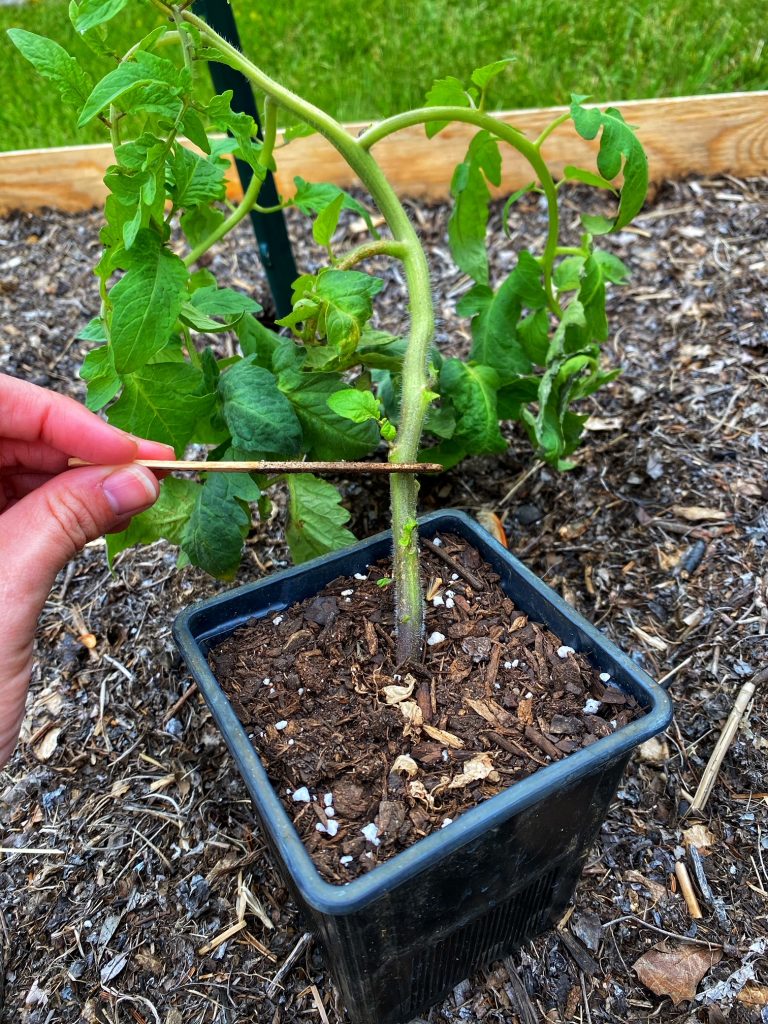
Plant your tomatoes deeply for stronger roots and happier plants.
Plant your toms deeply. Tomato roots grow from the sides of the stem, so when you’re putting your plant into the dirt, plant it down far enough so the first set of leaves will be sitting on the top of the soil. This will help your tomato grow stronger roots, and ultimately, better tomatoes for you to enjoy.
Finally, if you’re planting multiple tomatoes, it helps to space them apart by at least 12 inches. Tomatoes like space to breathe, to grow healthier, bushier plants. I set mine too close together last year, and while I ended up with a lot of tomatoes, they didn’t grow very large.
Wrapping up the raised bed tour in the garden is our asparagus bed, which also now houses some herbs: more chamomile, basil, oregano, and parsley. The chamomile is mostly for the pollinators. The other stuff I like to cook with, and I’ll dry some as well for use during the winter and for holiday gifts.
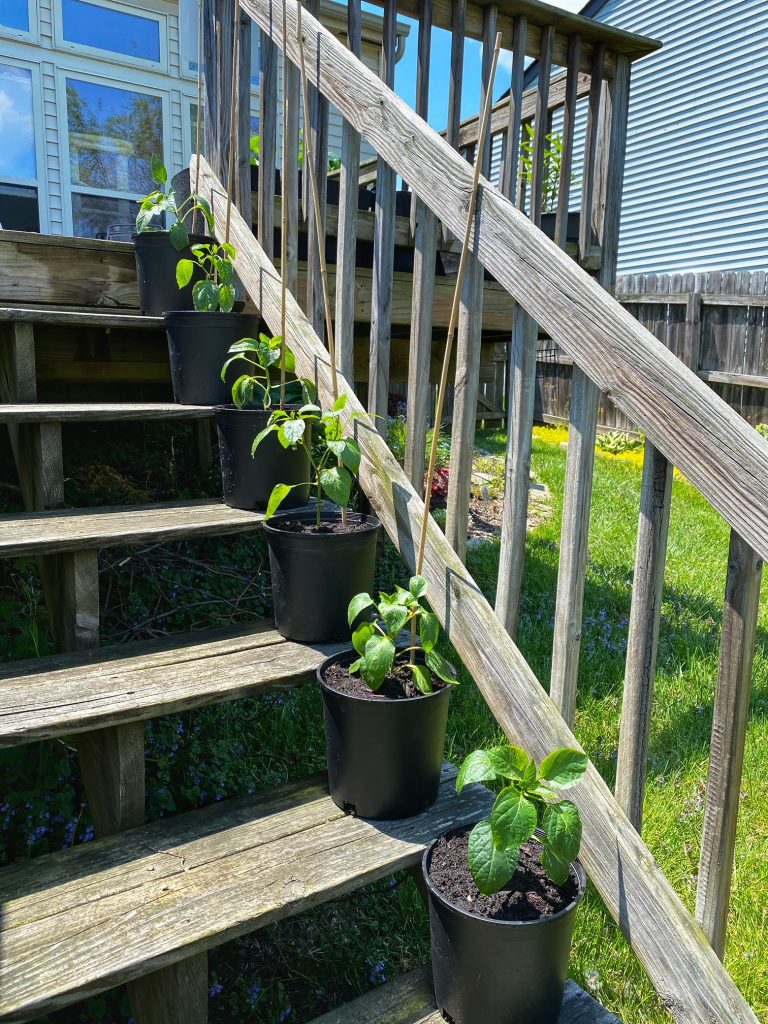
The real stairway to heaven
Close observers of this blog may be wondering, why, Sara, didn’t you also grow some peppers this year? Yes, gardeners, I certainly did. I grew six italian sweet pepper plants, in fact. They are all fairly tall already, and flowering. I had planned to add them to the raised beds, but someone grew too many tomatoes and ran out of room. The third trip to the garden center this weekend (%^&%&$#!) was to pick up containers and dirt for them. They now live on the deck steps, as I am running out of room on the deck itself. I’m really testing the structural integrity of our deck boards this year.
Out in the rest of the garden, things are flowering and the heat and rain in this weeks forecast should bring out even more. Our daises, clematis, lilacs, coral bells, allium, irises, and columbines are all in bloom, and the peonies look about ready to pop as well. (Peonies are my absolute favorite flower, so I’m anxious to see them again this year!) The climbing roses are also beginning to bloom, in a brilliant, hot pink. A few years ago, I thought I’d accidentally killed them off, but they stubbornly refused to die. The plant has just grown out of control. I should have started training them a month ago, but I must have had very important things going on then. So, this weekend, the husband helped me put in some eye hooks along the fence where they grow, and we tied some fishing line between the hooks to string the roses through. Many puncture wounds later, the roses are looking much happier, and the lilies and lambs ear that grow below them are happy for some actual sunlight again.
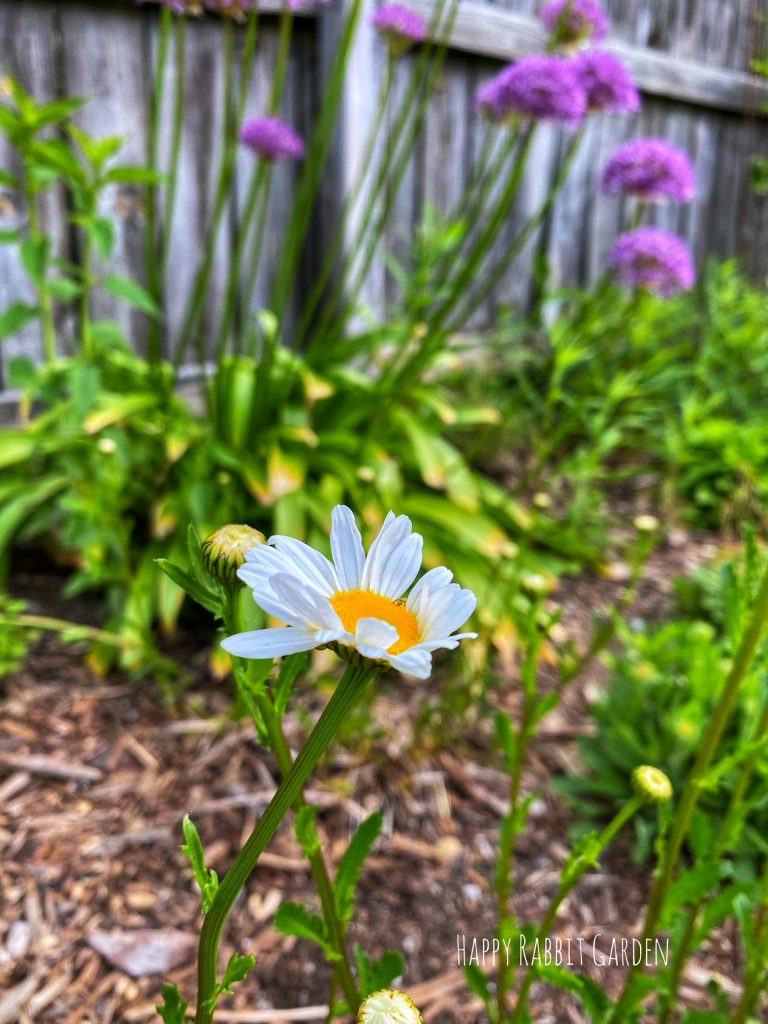
Daisies 
Roses 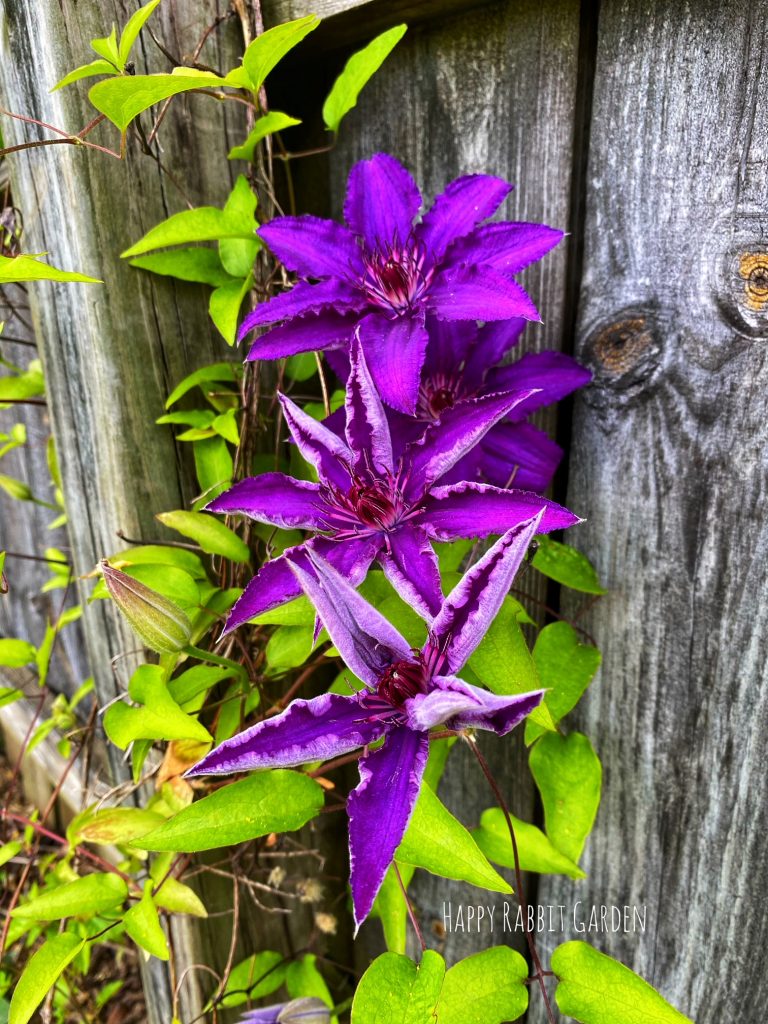
Clematis 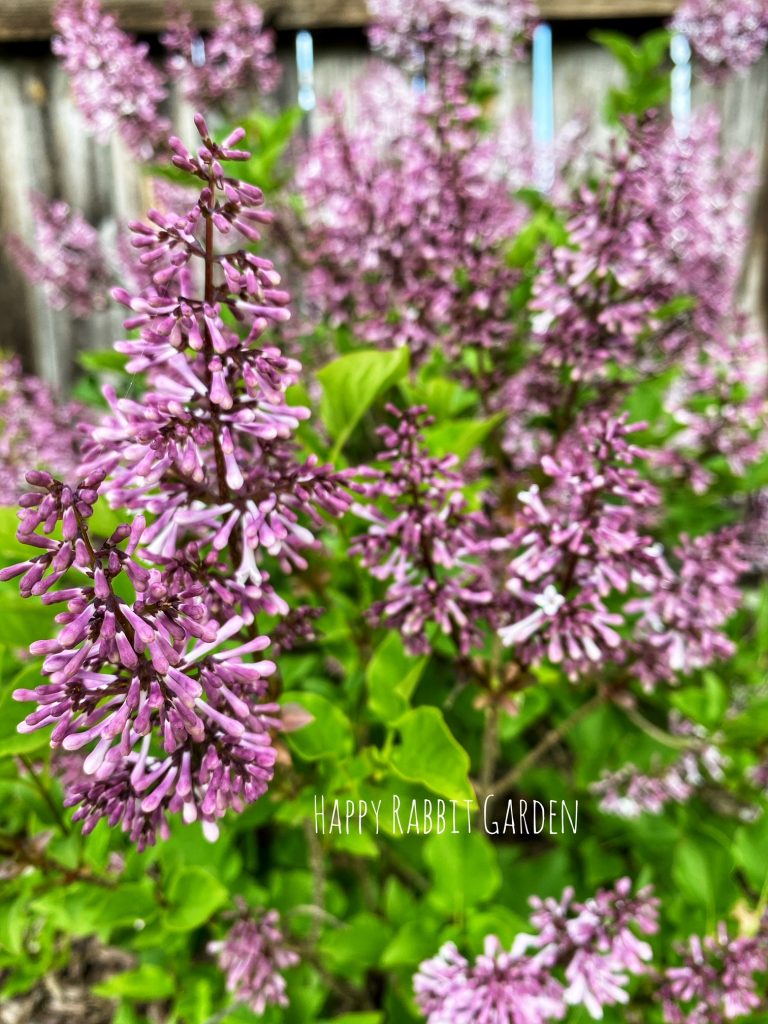
Lilacs 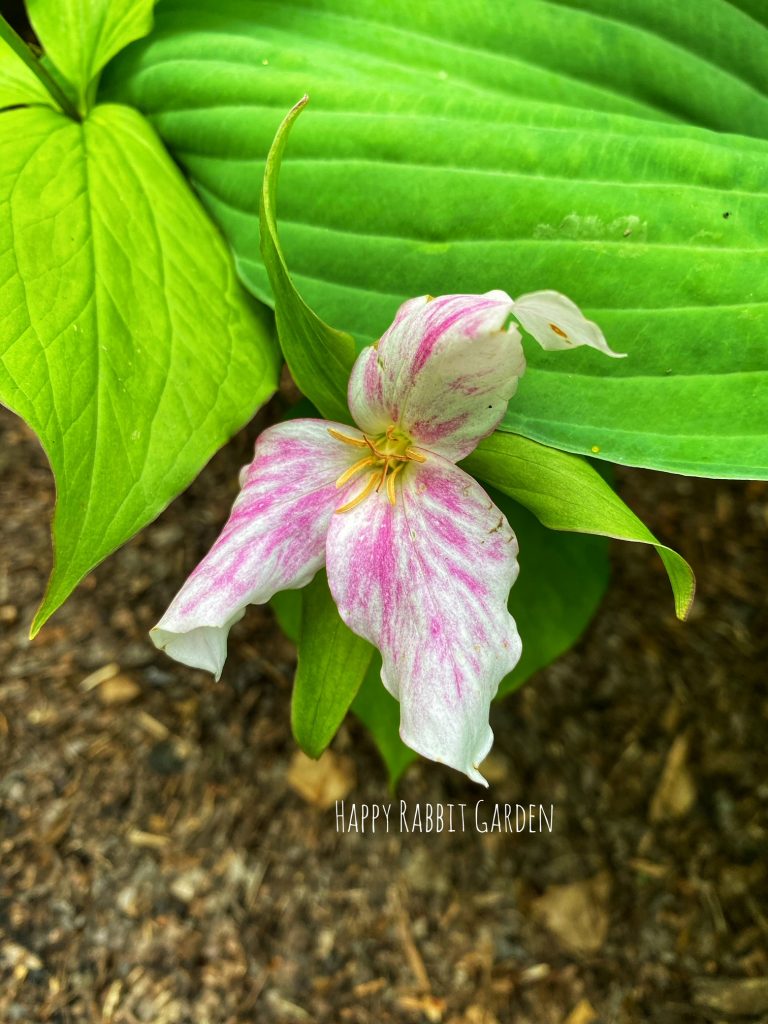
Giant White Trillium 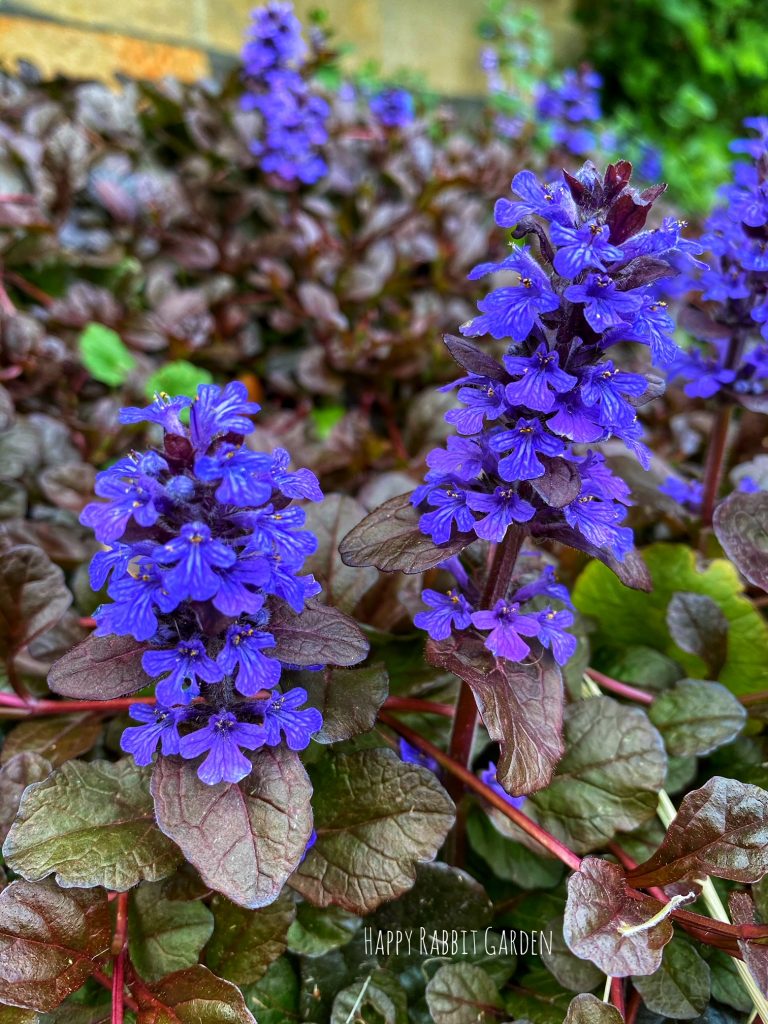
Bugleweed 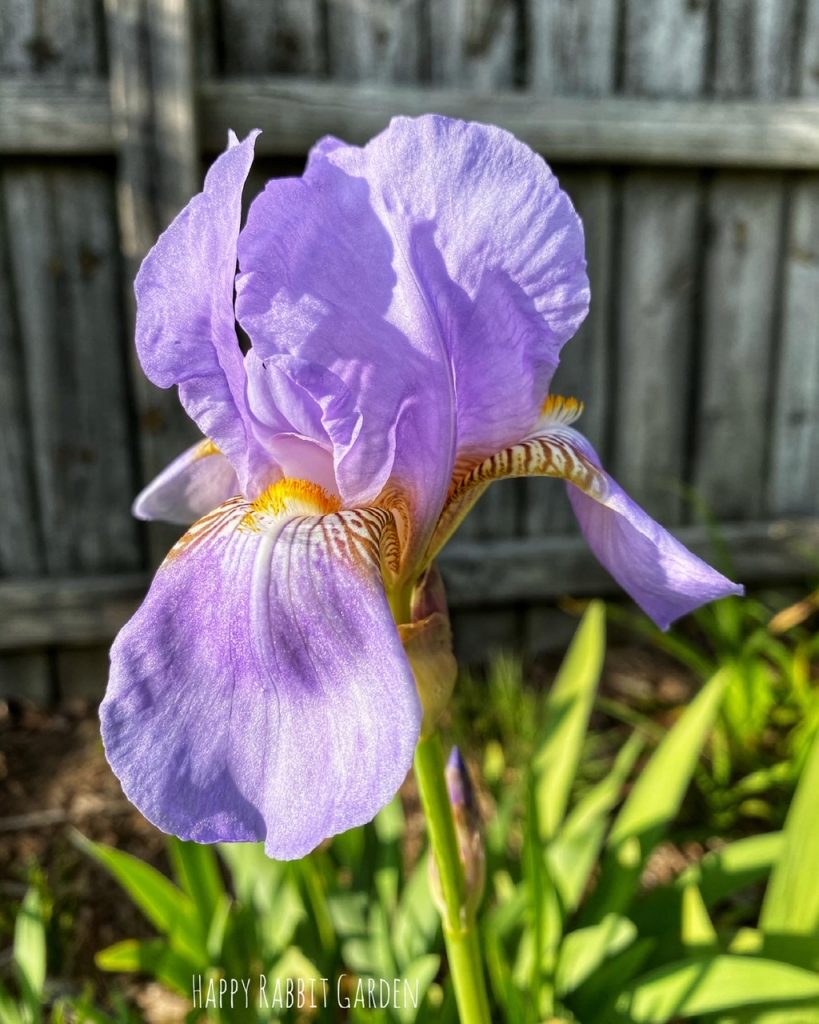
Irises 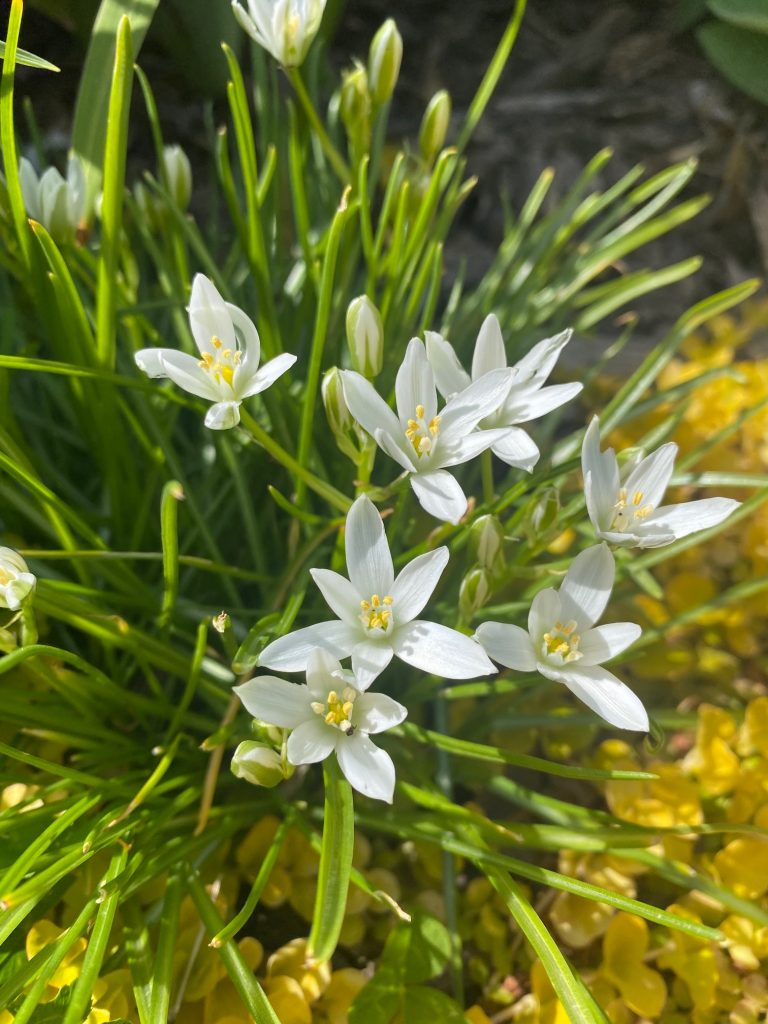
Star of Bethlehem 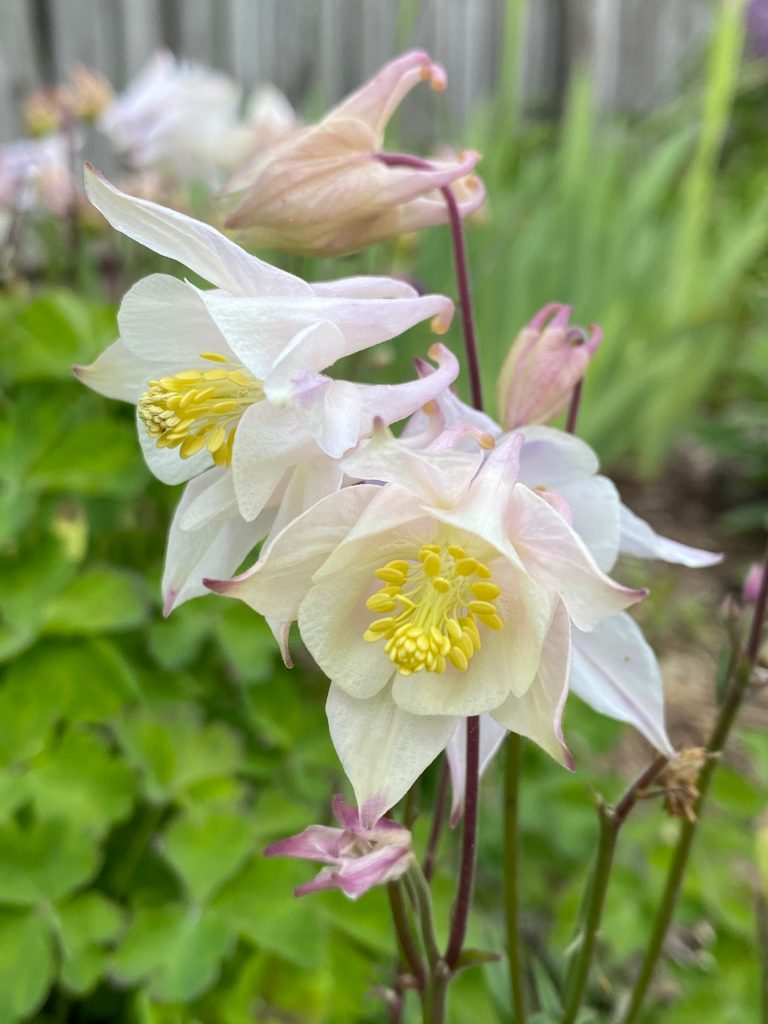
Columbines
All that’s left to do now is to dig up the sod in the front yard for the next bed, in the grass patch between the sidewalk and the street. I have some native grasses and plants growing that should be ready to pop into the ground soon, so I need to get digging. Once that’s wrapped up, it will be time to fall into the lounge chair on the deck to enjoy all of this years hard work! I can’t wait to see everything bloom as the days grow longer. The swallowtail butterflies should be here before too long. We have their favorite host plants: dill, fennel, and parsley waiting.
Hope all is well in your garden, and that you are able to get out and enjoy nature this week. Happy gardening!
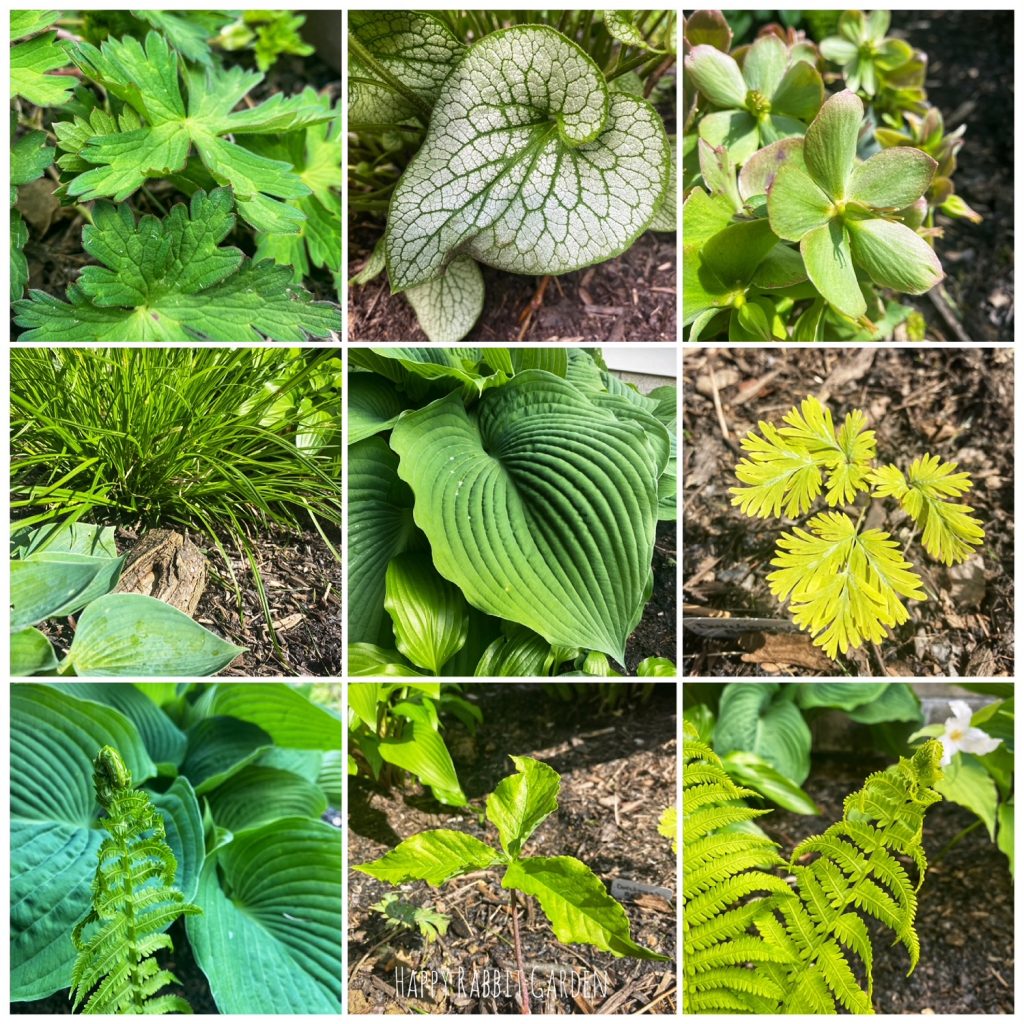
Wild geraniums, brunerra, hellebores, creek sedge and hostas, hosta, dutchman’s breeches, hostas and ferns, jack in the pulpits, and ferns with trillium and hostas

